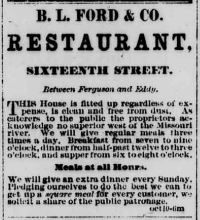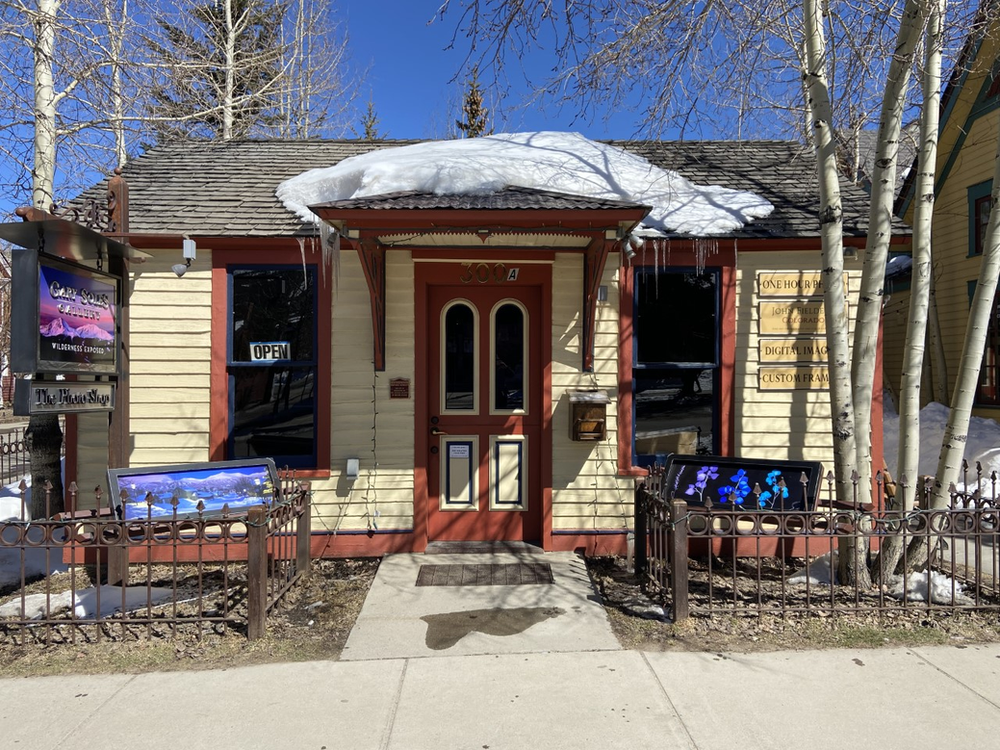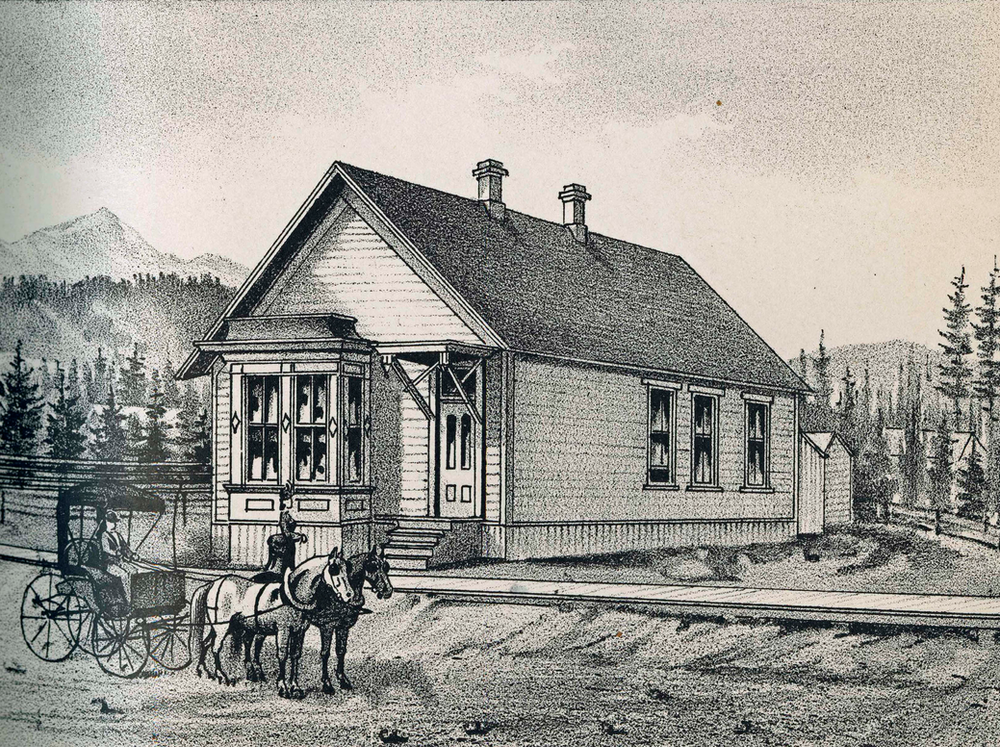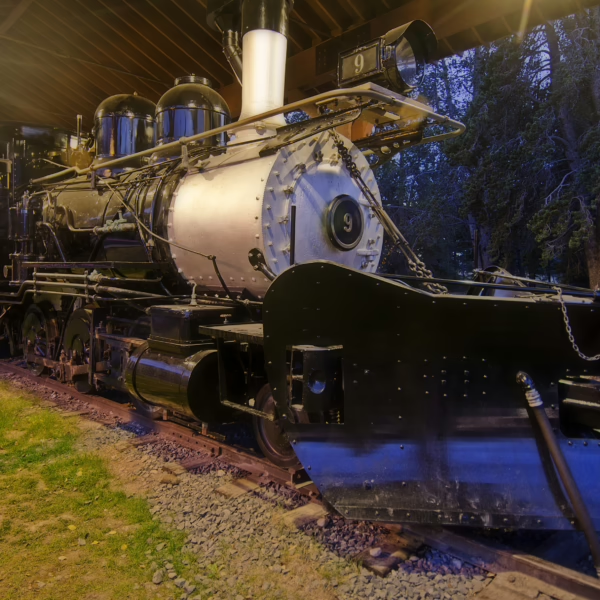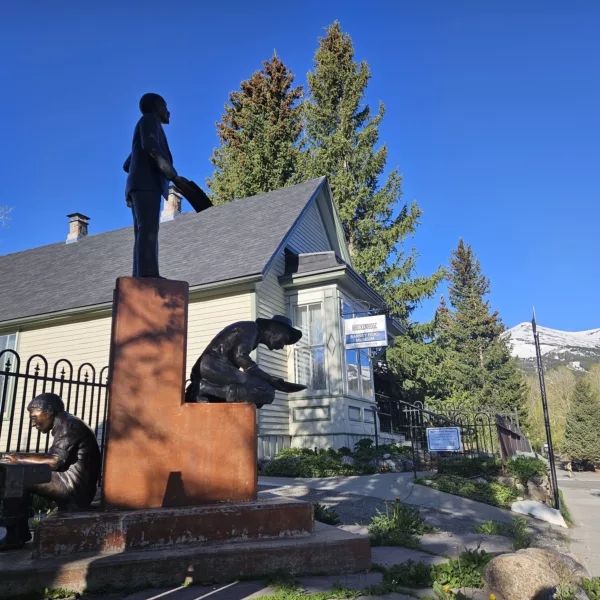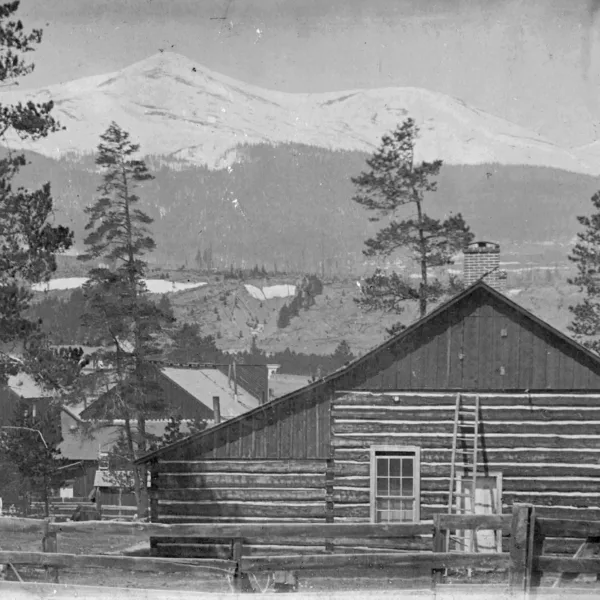Louis Ford: Parte 1 - Primeros años en el Salvaje Oeste
15 abril 2022 | Category: Nuestra historia colectiva
"El dinero parece haber sido la raíz de muchos males en la familia Ford", escribió el Breckenridge Bulletin el 7 de junio de 1902. Esta críptica afirmación ha desconcertado a los historiadores durante décadas. ¿Qué ocurría en la familia Ford en el verano de 1902? Barney Ford y su esposa Julia se mudaron de Breckenridge una docena de años antes. Julia falleció en mayo de 1899. Barney, entonces viudo, vivía en Denver. ¿Quién estaba en el origen del mal?
En el primero de dos artículos sobre Louis N. Ford, Breckenridge History repasa su juventud en Denver, Cheyenne y Breckenridge en los días del Salvaje Oeste. En la segunda parte, conoceremos su primera condena en prisión y su vida de joven bebiendo y apostando. En la tercera parte, seguiremos a Louis hasta St. Louis, Missouri, donde la correspondencia manuscrita de sus últimos años revela detalles de su personalidad y de la dinámica de su familia.
Poco se sabía de los hijos de Julia y Barney Ford hasta hace poco, cuando nuevos documentos de fuentes primarias llamaron la atención de Breckenridge History. Ahora, un examen minucioso de los registros arroja luz sobre los hijos menores de los Ford. Breckenridge History compartió recientemente la historia de la hija mediana , Sarah Ford Wormley. La hija mayor, Frances, sigue siendo un misterio, ya que murió en California a los 46 años en 1897.
Louis N. Ford, el menor de los hijos Ford, nació el 2 de julio de 1860 en Chicago, Illinois. Estados Unidos estaba entonces profundamente dividido en torno a la esclavitud y los derechos de los estados. La gente seguía esclavizada en el Sur, mientras que el Norte, incluido Illinois, vacilaba entre la ambivalencia y el abolicionismo radical. Stephen Douglas, elegido senador por el pueblo de Illinois, era un firme partidario del sistema de esclavitud estadounidense. En 1857 sostuvo que las personas esclavizadas no eran ciudadanos, lo que le valió un fuerte rechazo por parte de Barney Ford y otros hombres afroamericanos del estado. También en Illinois, Abraham Lincoln era candidato a la presidencia de Estados Unidos, puesto que ganaría más tarde, en 1860.
Cuando Louis nació, su padre, Barney L. Ford, se encontraba en las Montañas Rocosas, tras haber llegado a la ciudad de Denver en mayo de 1860 para buscar fortuna como minero de oro. El viaje a la región aurífera de Pikes Peak no fue la primera vez que Barney Ford estuvo lejos de su familia durante un largo periodo de tiempo. En la década de 1850, el Sr. Ford pasó muchos años en Nicaragua tras intentar llegar a los campos de oro de California. En aquella época, Julia se quedó en Chicago con su hija Frances.
Es probable que el Sr. Ford conociera a su único hijo en 1861, cuando regresó a Chicago durante un breve periodo para atender allí su restaurante. La práctica de Ford de ausentarse tras el nacimiento de sus hijos durante largos periodos, incluso durante años, puede haber influido en su desarrollo temprano. La hija mayor, Frances, se casó a los 18 años. Sólo su hija Sarah, que disfrutó de la presencia de su padre de niña, mantuvo una estrecha relación con Barney Ford a lo largo de su vida.
Los registros históricos muestran que Barney Ford estuvo principalmente en el área de Denver desde 1860 hasta 1865. No existe documentación sobre la época en que Julia y los niños llegaron al oeste. El viaje de Chicago a Denver para una familia afroamericana habría sido especialmente peligroso y difícil a principios de la década de 1860. Estaba en vigor la Ley del Esclavo Fugitivo, que podía poner en peligro a Julia y a los niños aunque fueran "libres". El viaje era duro, ya que combinaba el viaje en tren con las diligencias por tierra a través de territorio nativo americano.
Es posible que Julia y los niños llegaran al oeste mientras Barney Ford estaba en Denver a principios de la década de 1860. Quizá el señor Ford se trajo a la familia a Denver con él cuando regresó tras una breve estancia en Chicago en 1865, o quizá les pidió que esperaran hasta que pudieran tomar el tren de Chicago a Cheyenne, donde abrió un restaurante en octubre de 1867, coincidiendo con la llegada del ferrocarril transcontinental.
En algún momento a finales de la década de 1860, la familia se encontraba reunida en la nueva ciudad de Cheyenne, en el Territorio de Dakota. El censo de 1870 muestra a la familia Ford allí, incluyendo a su hija Frances, su marido John Jones y su bebé William.
Cheyenne era una ciudad salvaje en la década de 1860, la más salvaje del Salvaje Oeste. En la ciudad donde se crió Louis eran frecuentes los tiroteos, los apuñalamientos y los robos, y proliferaban los salones de baile y las tabernas. La policía disparaba por las calles a los sospechosos que huían. El ganado corría por la ciudad. Louis pudo observar cómo prostitutas ebrias "se subían estúpidamente a un vehículo y se lanzaban a toda velocidad por la ciudad", haciendo alarde de su plumaje volador. Los padres de la ciudad denunciaron la "mala impresión en las mentes de los hombres y mujeres morales que visitan nuestra ciudad".
El censo de 1870 revela que Louis tenía entonces 9 años, iba a la escuela y sabía leer y escribir. Como tanto Barney como Julia eran educados, hicieron de la educación una prioridad también para sus hijos. La familia Ford regresó a Denver en 1871 tras un devastador incendio. Se trasladaron de nuevo a Cheyenne con la apertura del gran Hotel Inter-Ocean allí en 1875.
A los 17 años, Louis ya tenía problemas con la ley. Según el Cheyenne Daily Sun del 18 de mayo de 1878, "Louis Ford... fue arrestado". Un tal Sr. James Burns, cliente del Hotel Inter Ocean, entró en el hotel a la 1:00 a.m. "considerablemente intoxicado". Louis Ford era el empleado nocturno de turno. Burns confió a Louis 30 dólares en efectivo para que se los guardara hasta la mañana siguiente. Cuando Burns reclamó el dinero al día siguiente, sólo cobró 20 dólares del joven. Louis declaró que había recibido 20 dólares de Burns y mostró un fragmento de sobre, abierto y cerrado por él, delante de Burns. En el sobre figuraba la inscripción: "James Burns 20 dólares". Al recibir el dinero, Burns "rompió el sobre en dos y lo arrojó a una escupidera, y... mandó detener a Ford". El fiscal desestimó la acusación "antes de tener todas las pruebas".
La misma edición del Cheyenne Daily Sun, de hecho la misma columna, compartía otra historia sobre la familia Ford: "El Sr. B.L. Ford partirá de aquí el domingo hacia San Francisco... No ha decidido del todo lo que hará... Los mejores deseos de la gente de Cheyenne le acompañarán". Tres días más tarde, el Daily Sun escribió que Ford partió hacia la costa del Pacífico debido a "una deuda en el edificio, que no pudo levantar..." Tal vez la familia se enfrentaba a otros problemas además de los financieros.
Si el supuesto robo al Sr. Burns fuera el único incidente en la vida de Louis, sería fácilmente desestimado como la acusación de un borracho. Conociendo el arco hacia la criminalidad que Louis seguiría, la pérdida de fondos del huésped probablemente indicaba que la falta de respeto por la propiedad y las leyes se estaba haciendo evidente en el joven.
Louis, aún adolescente, probablemente se fue a San Francisco con la familia. Barney Ford aprendió rápidamente que San Francisco no era para él. Ford escribió célebremente: "Para un hombre sin muchos medios, San Francisco es el lugar más duro del mundo".
En 1879, la familia Ford regresó a Breckenridge para empezar de nuevo. Barney Ford abrió el Ford Chop Stand en Main Street y Louis le ayudó en el restaurante. En el censo de 1880, Louis y su hermana Sarah, ya adultos, vivían con sus padres en Breckenridge. Pronto la familia ocuparía el edificio que hoy conocemos como The Photo Shop.
Con el repunte de su éxito en Breckenridge, en 1882 Barney Ford encargó la construcción de una nueva casa para él y Julia, hoy la Casa Museo Barney Ford. Curiosamente, la casa tiene dos dormitorios. No se sabe si Louis era bienvenido, aunque había otras dependencias en la propiedad, y al menos una identificada como vivienda, donde podía vivir un joven. En 1883, Sarah regresó de Denver tras un asalto y residió en la casa con sus padres.
En 1885, se realizó otro censo que reveló que tanto Louis como Sarah se habían independizado. Louis no tardaría en volver a tener problemas con la ley.
La segunda parte de la vida de Louis N. Ford continúa en este enlace.
Para saber más sobre la historia de Breckenridge o para hacer una excursión, visitar un museo o leer los artículos de nuestro blog, visite nuestro sitio web.
Escrito por Leigh Girvin

